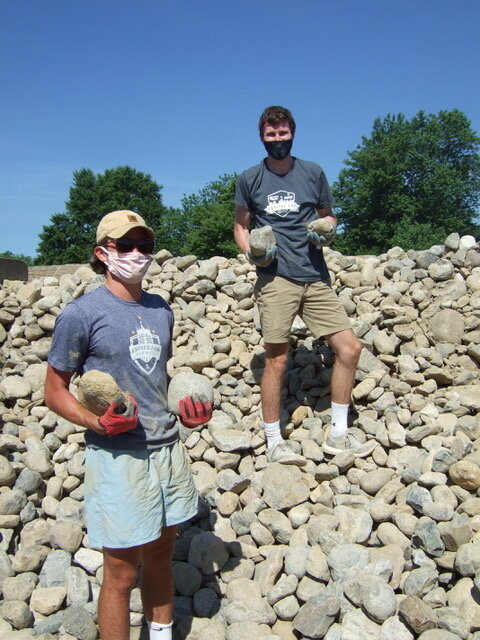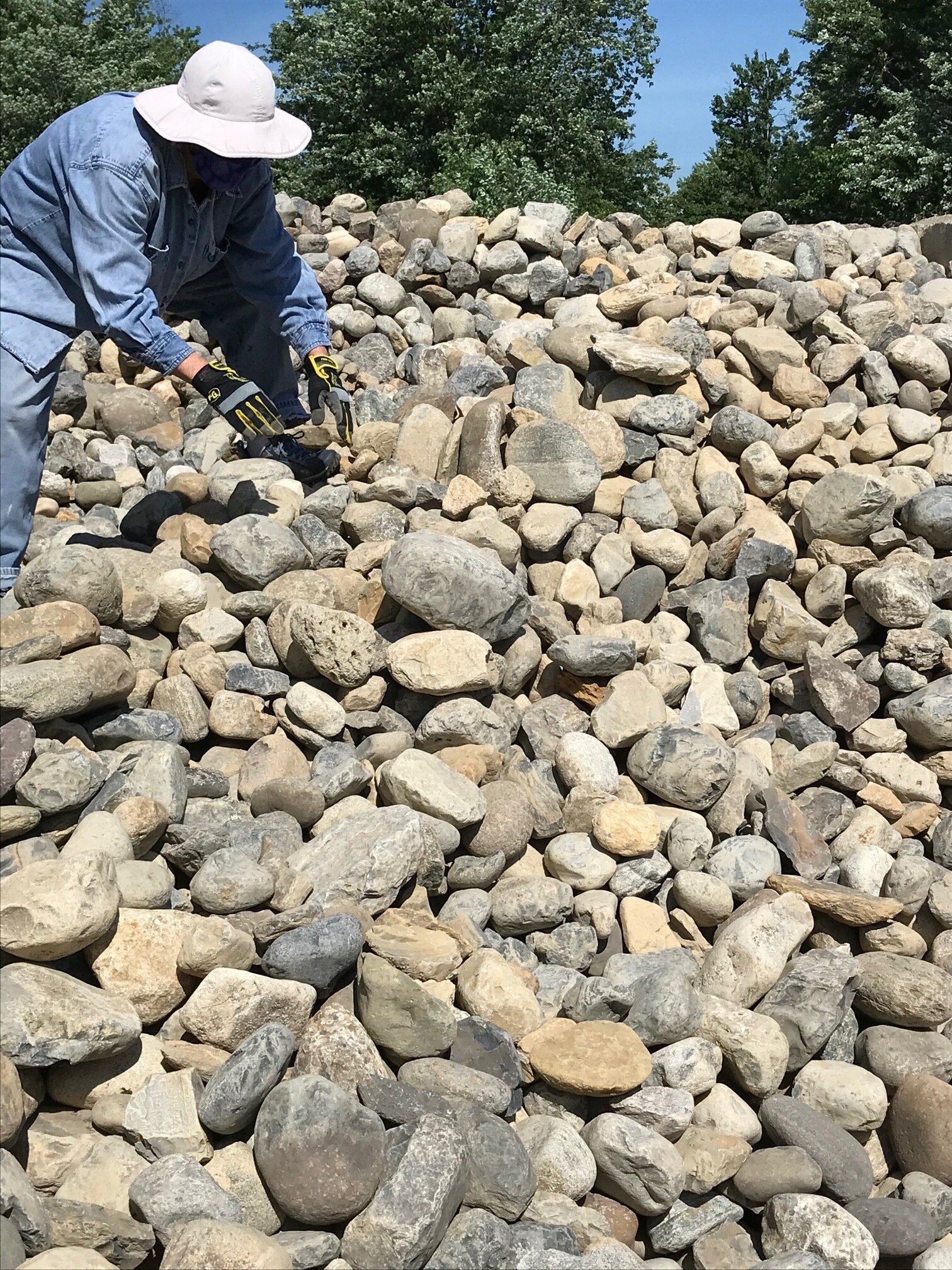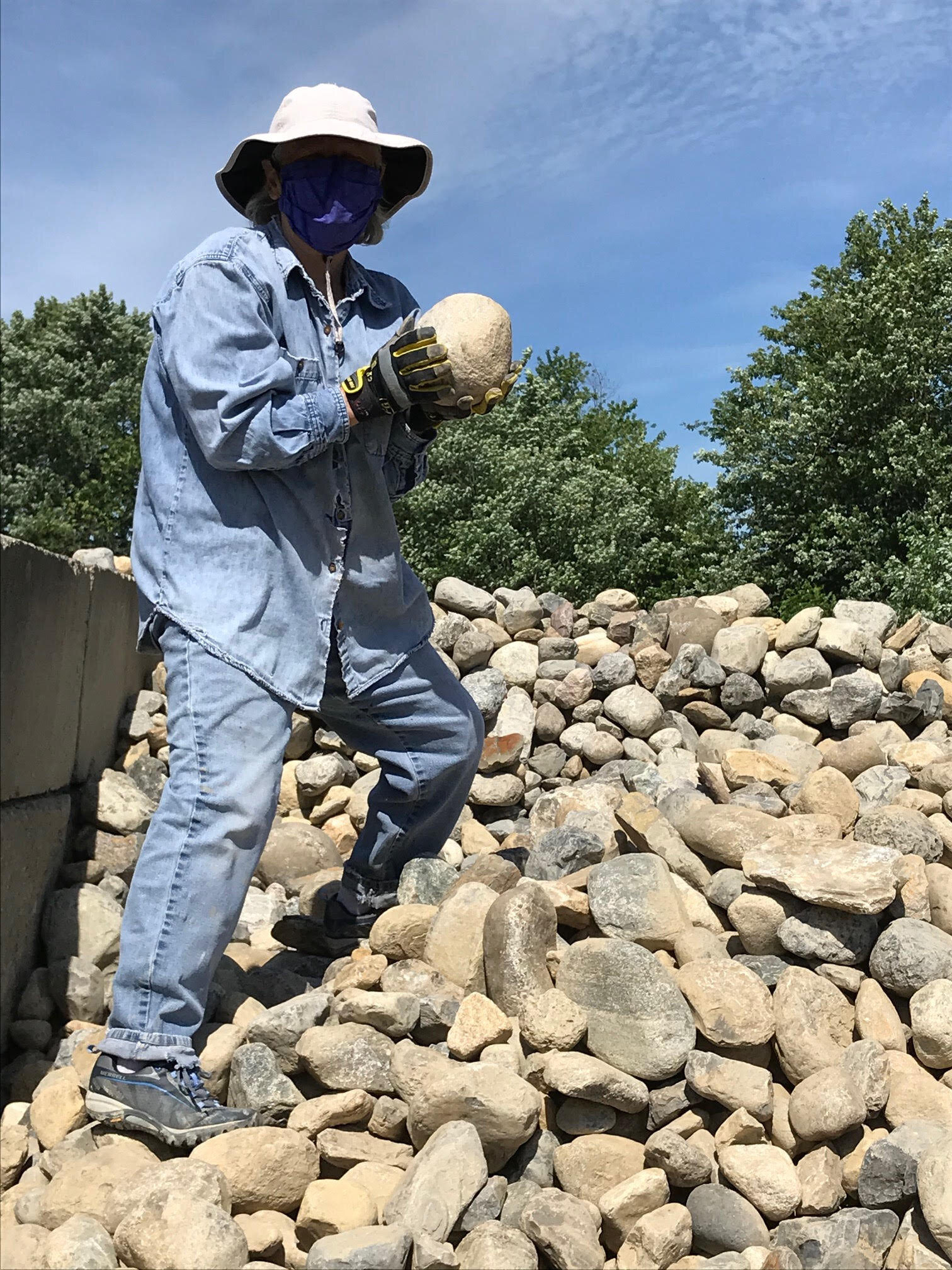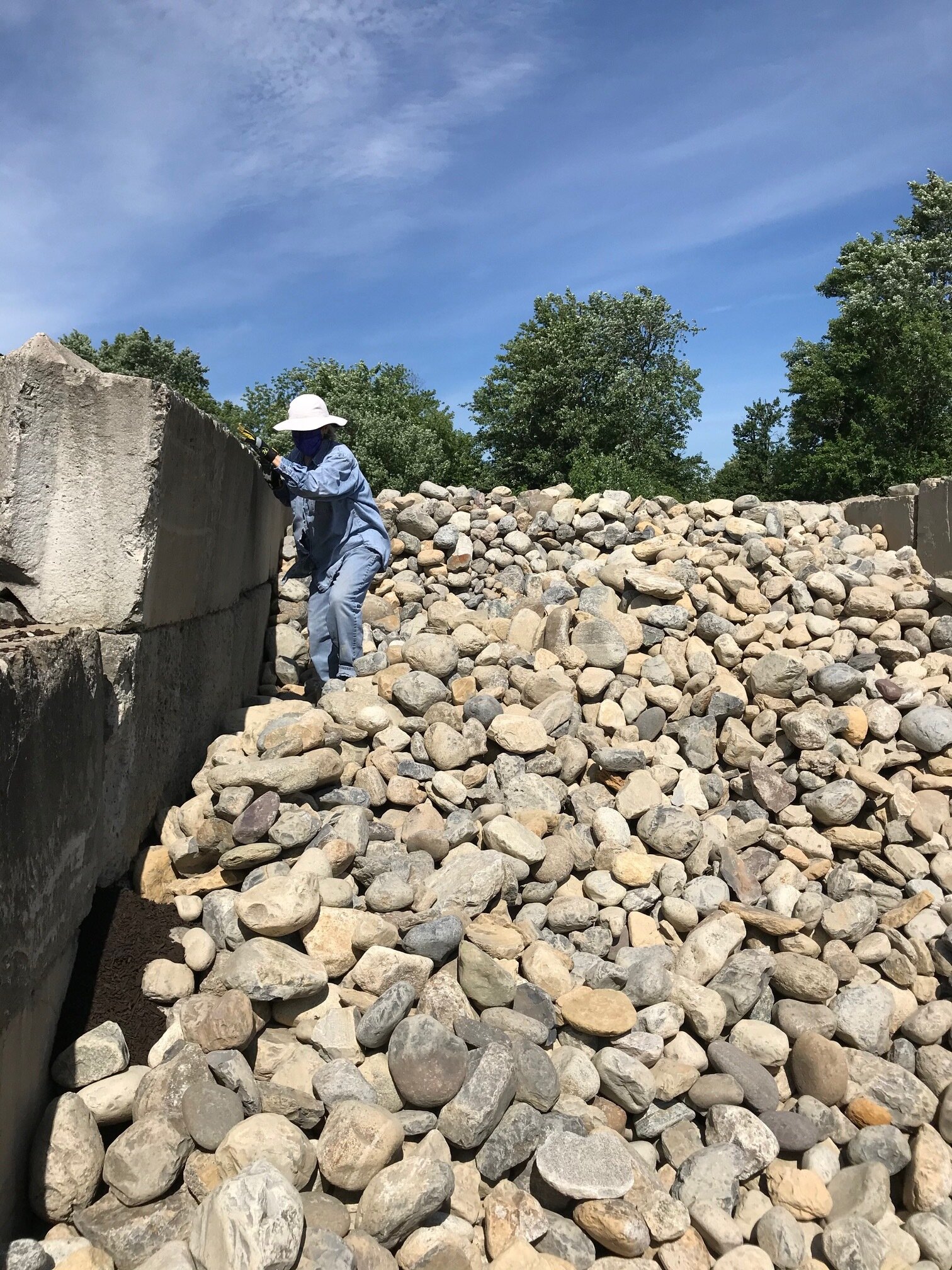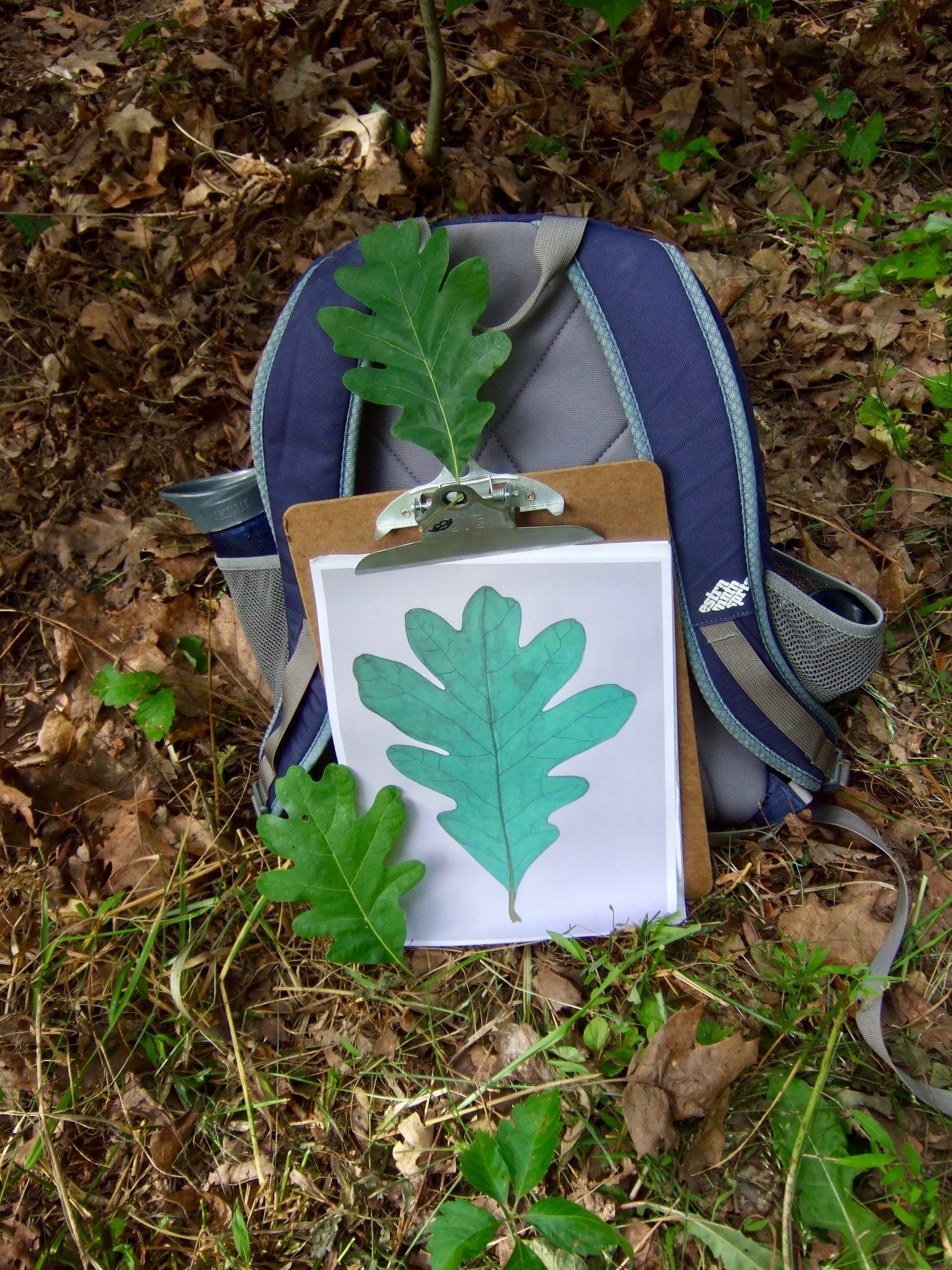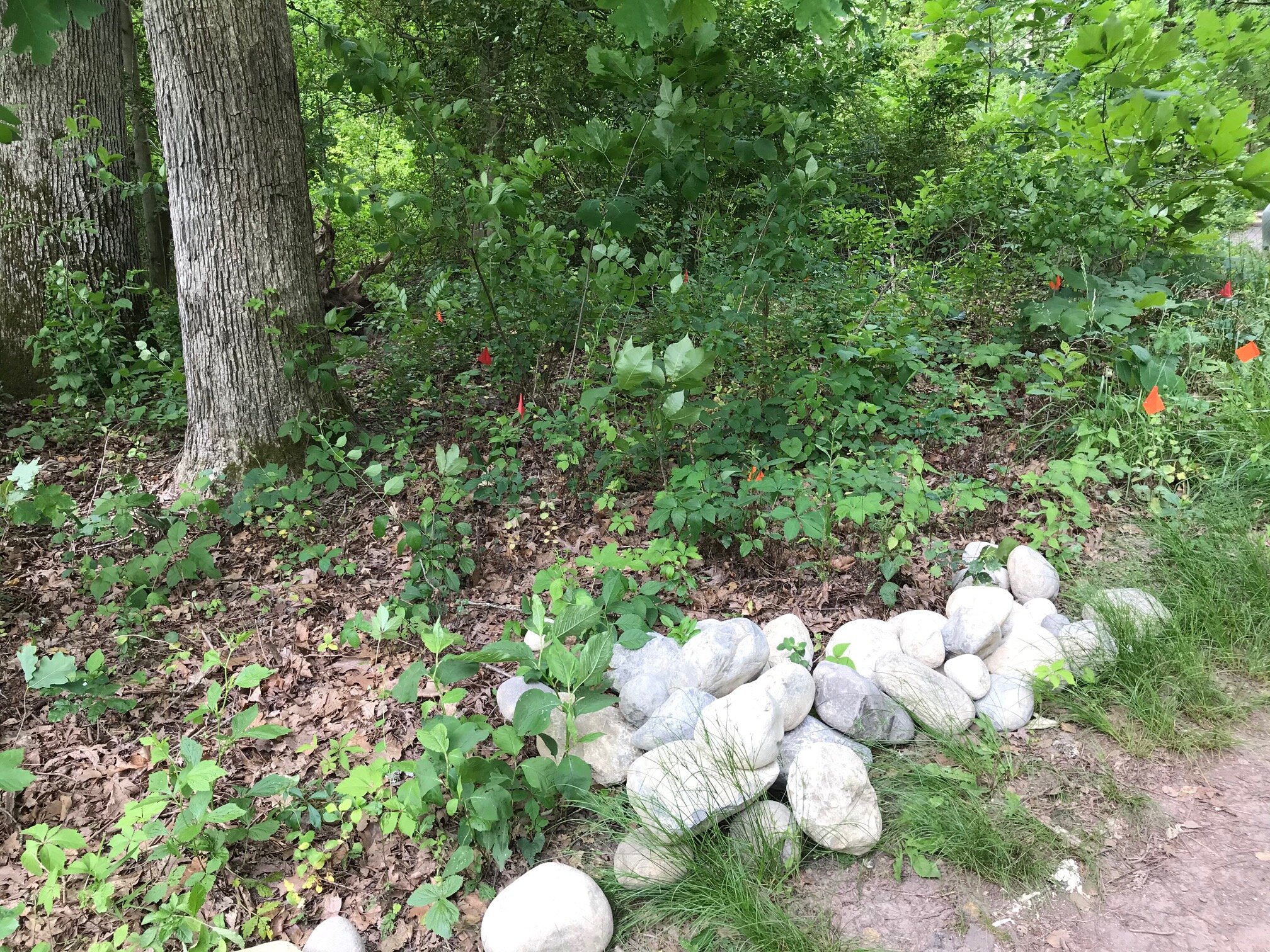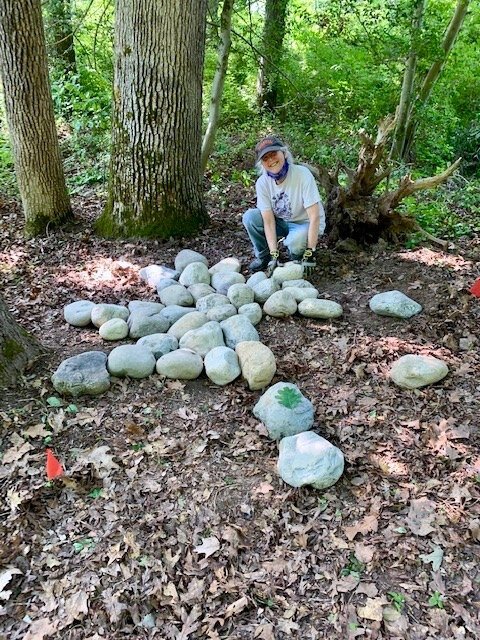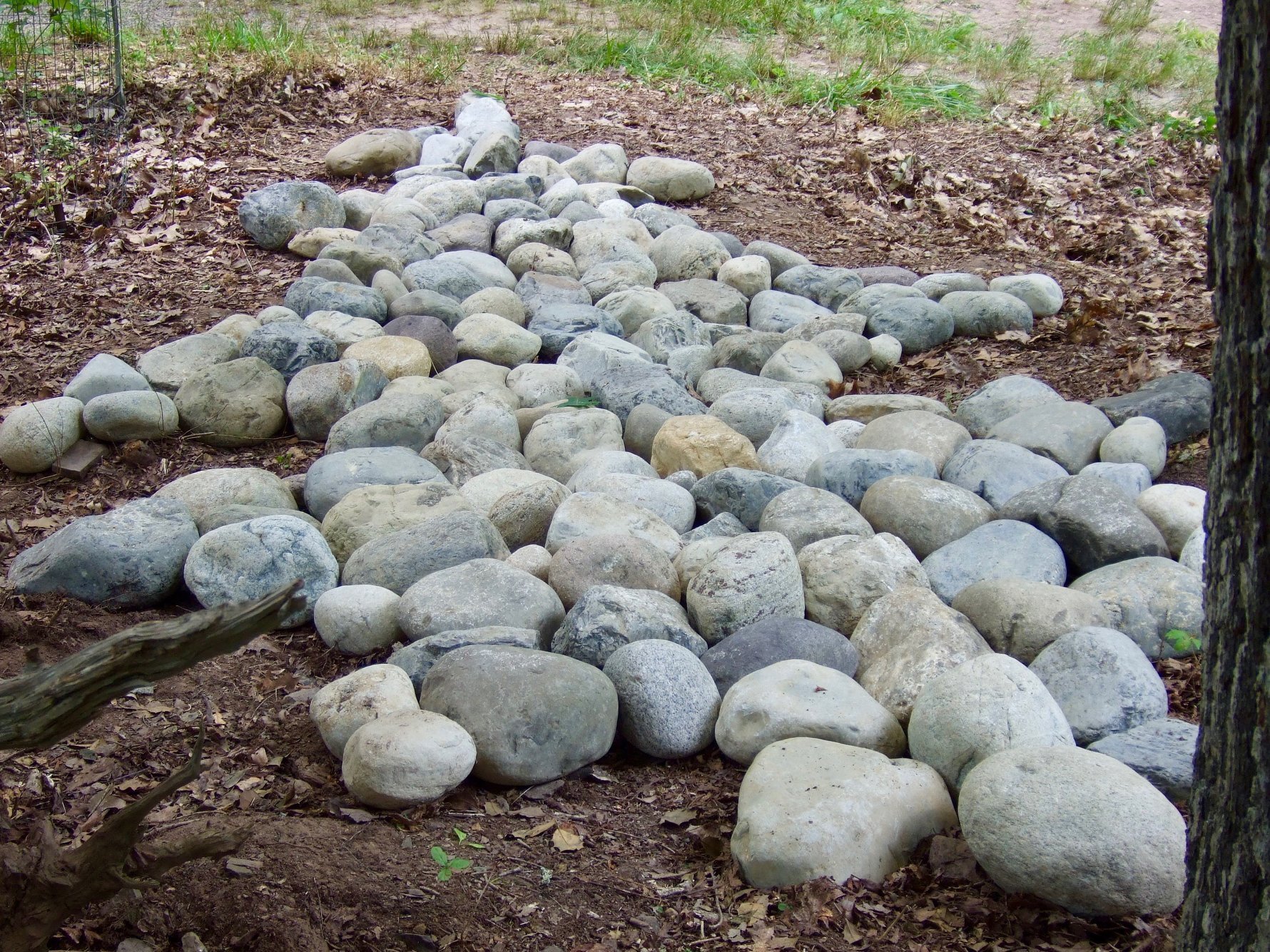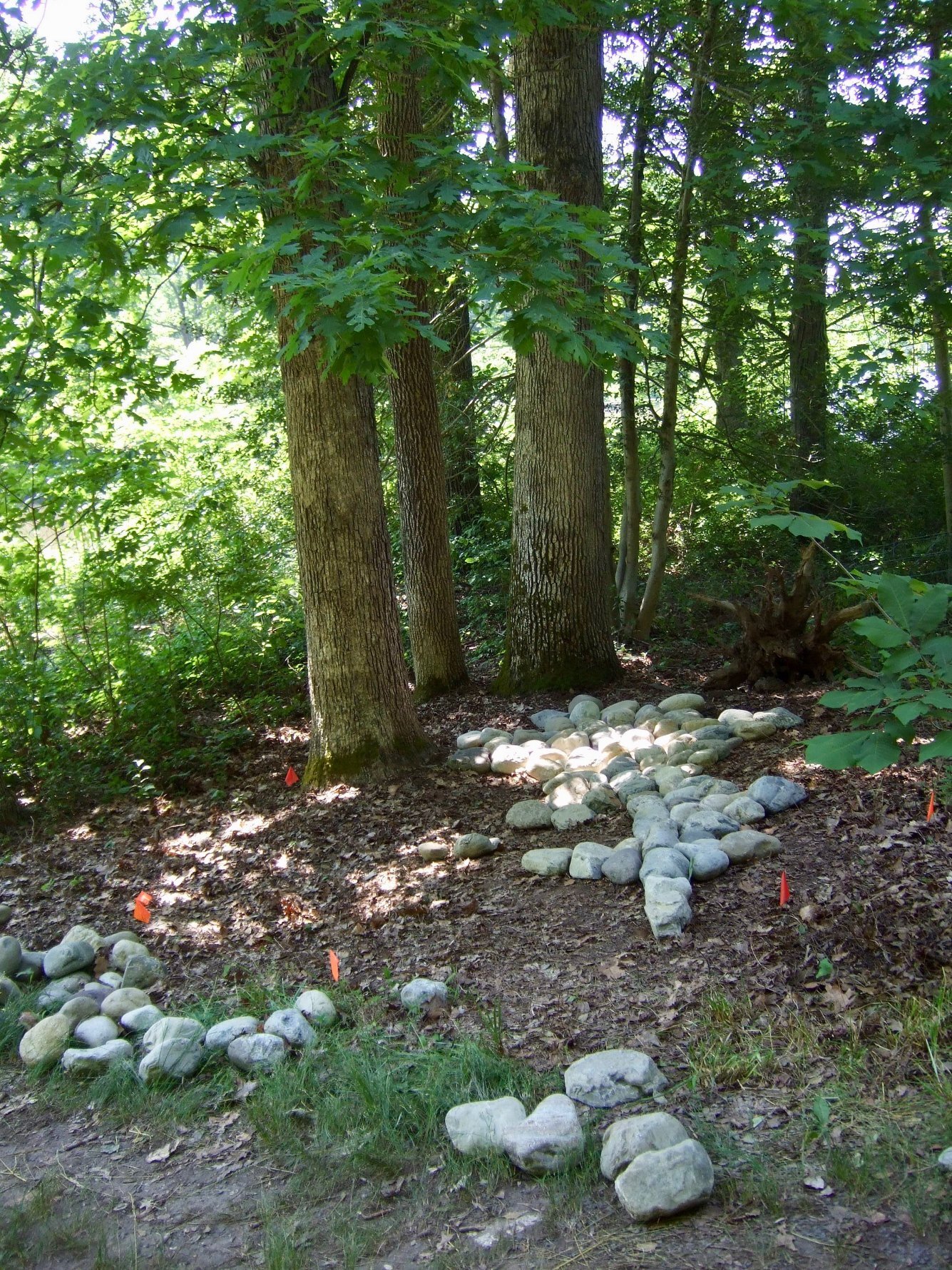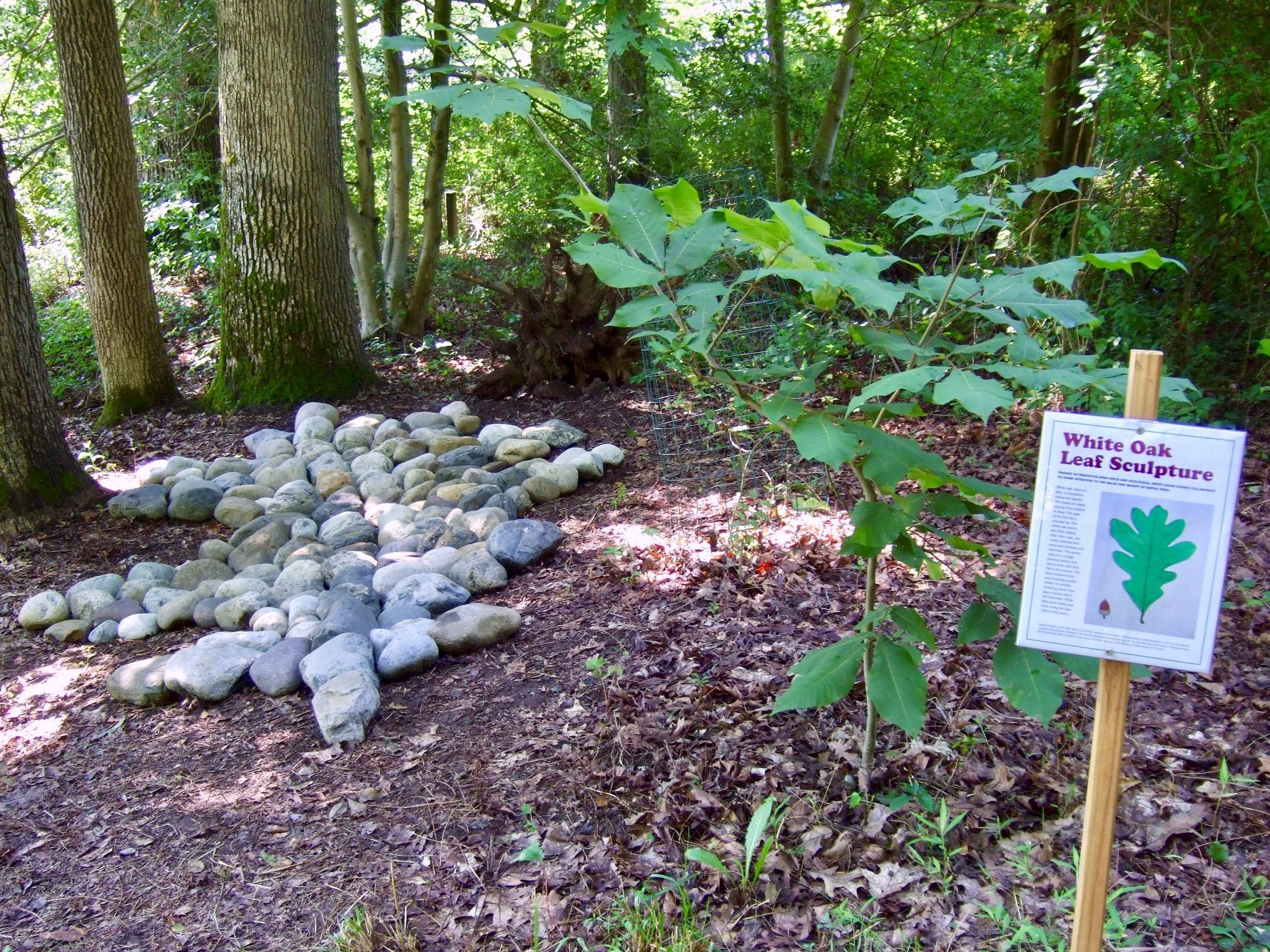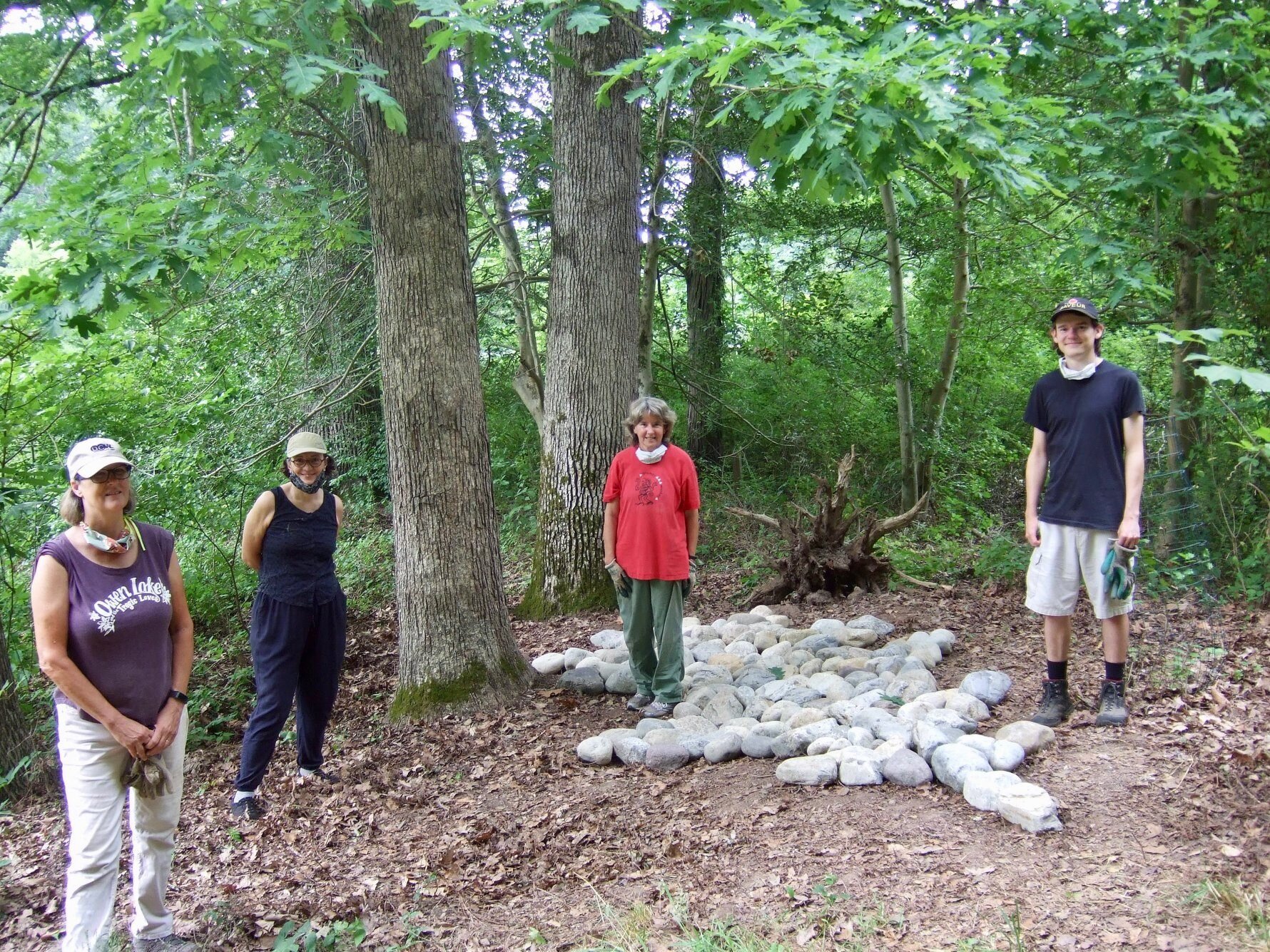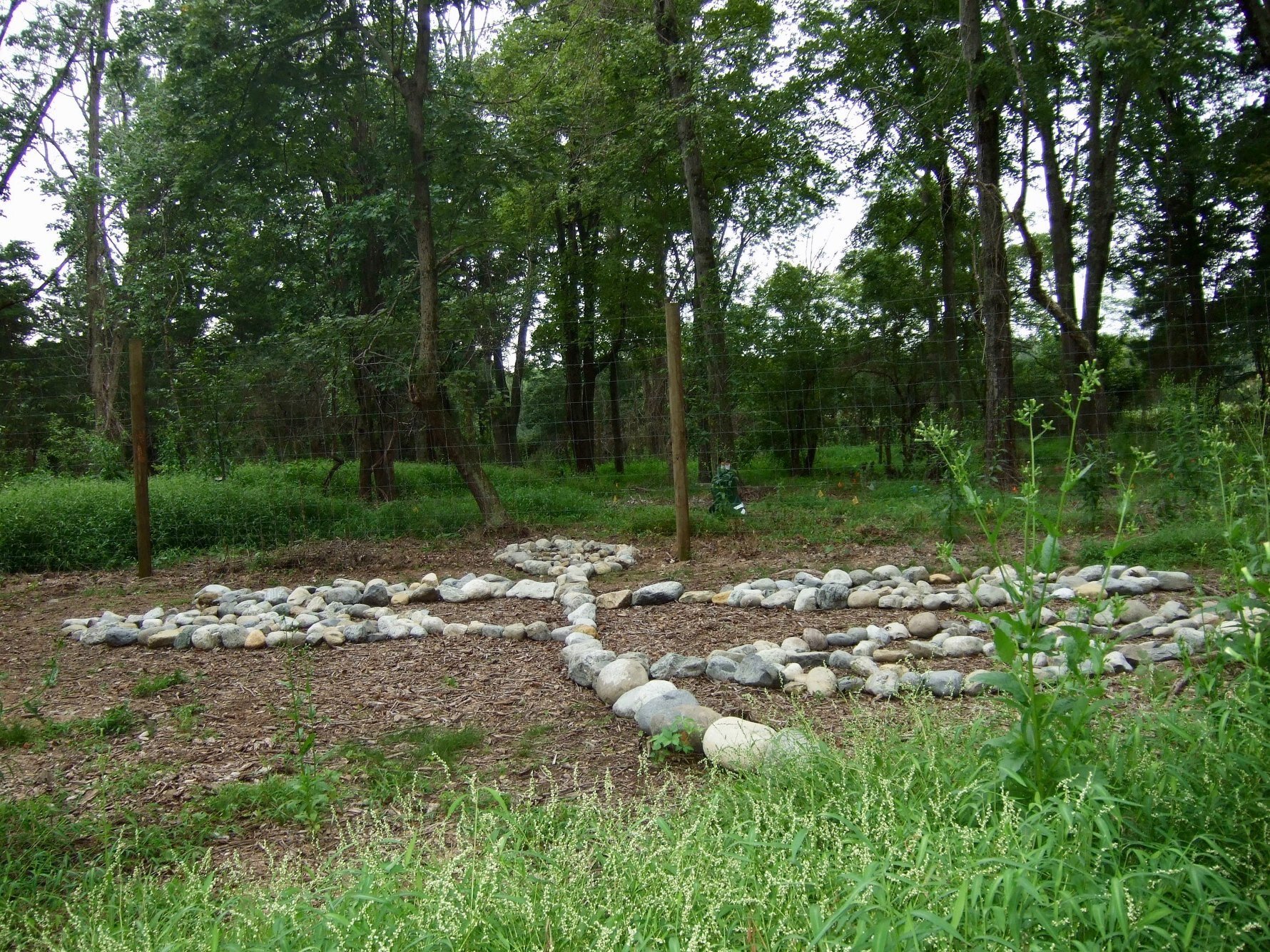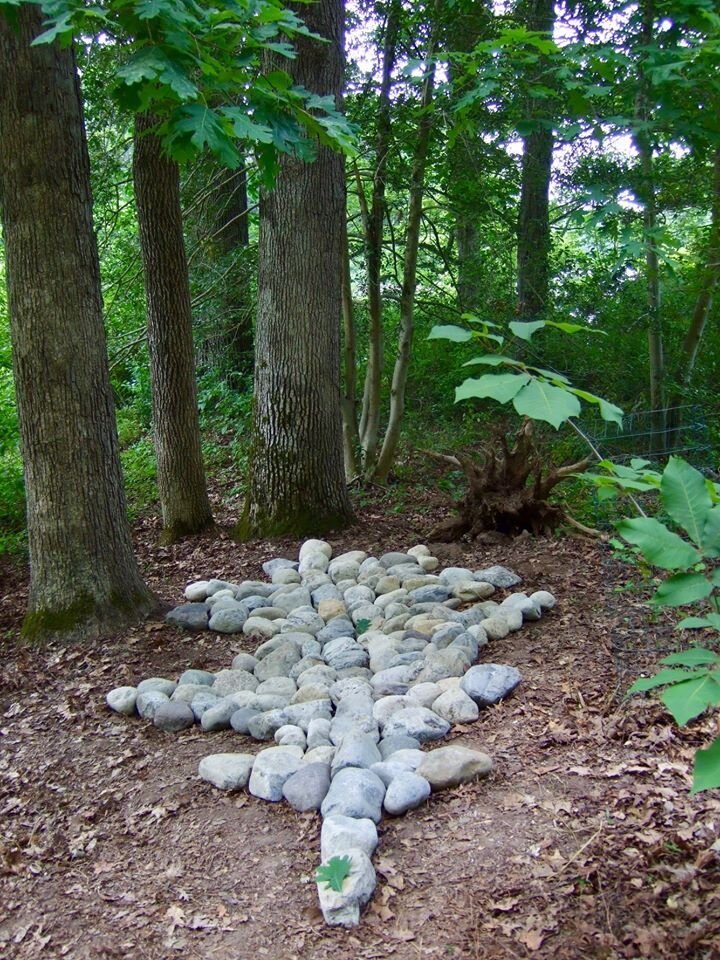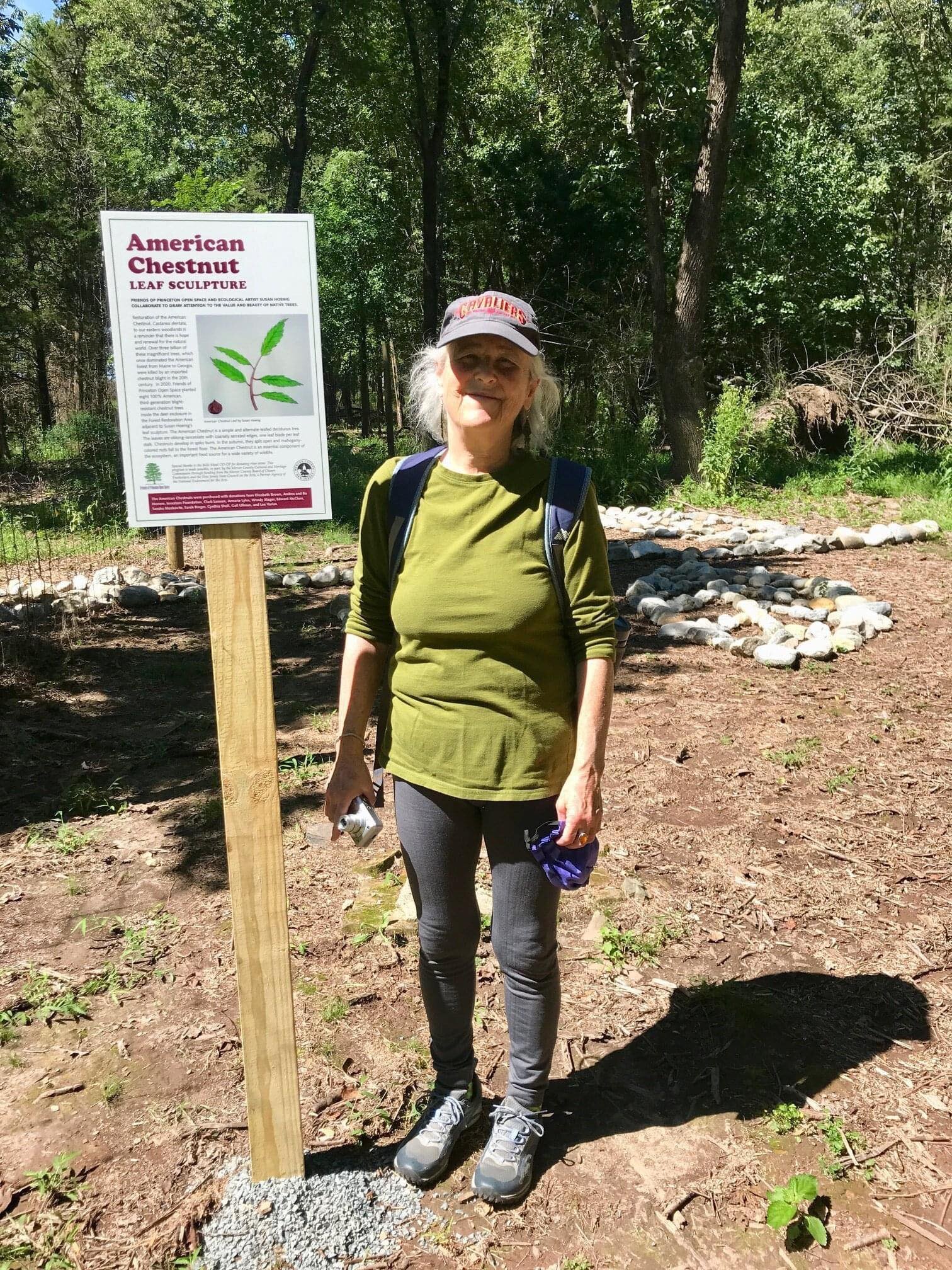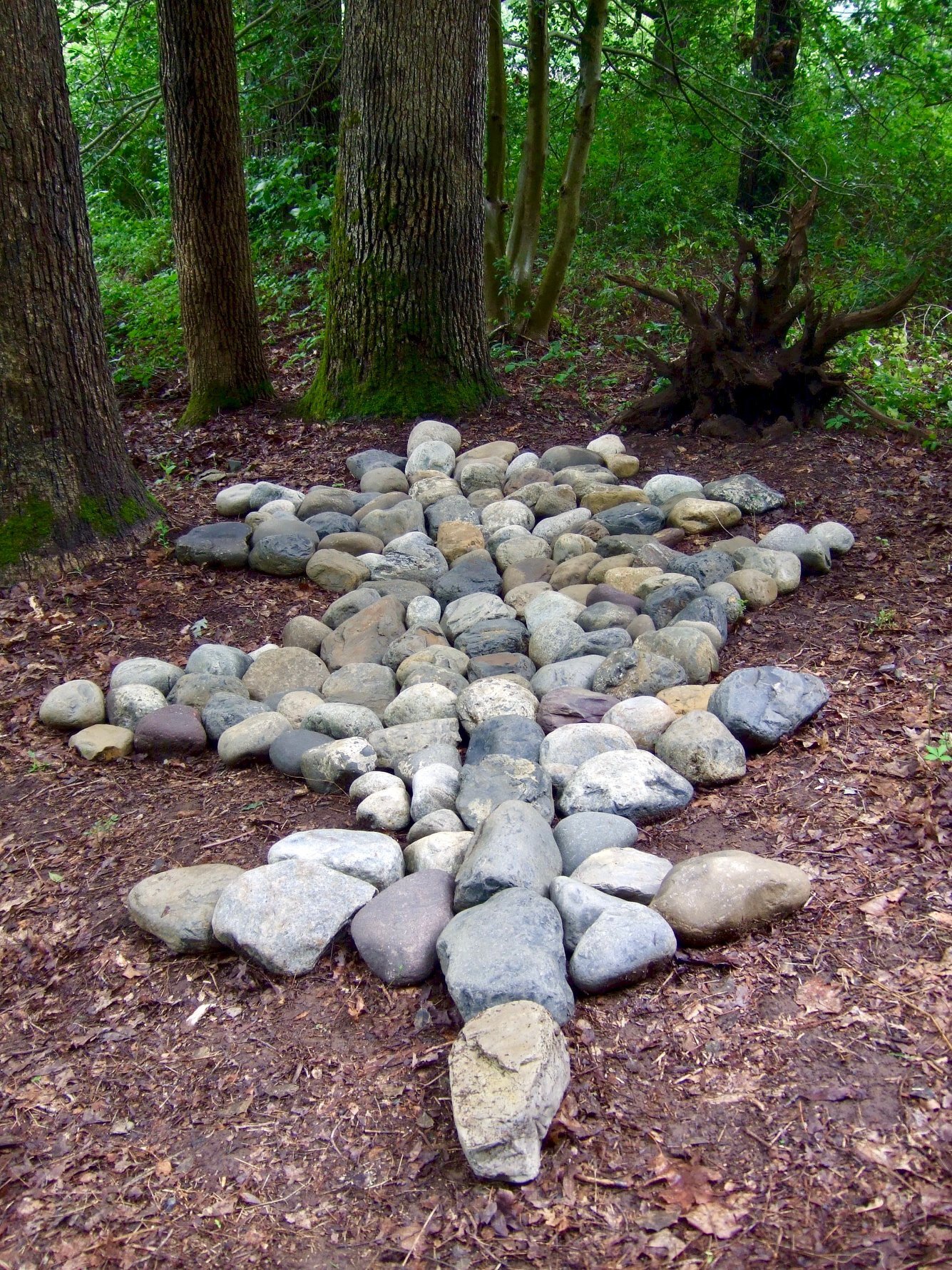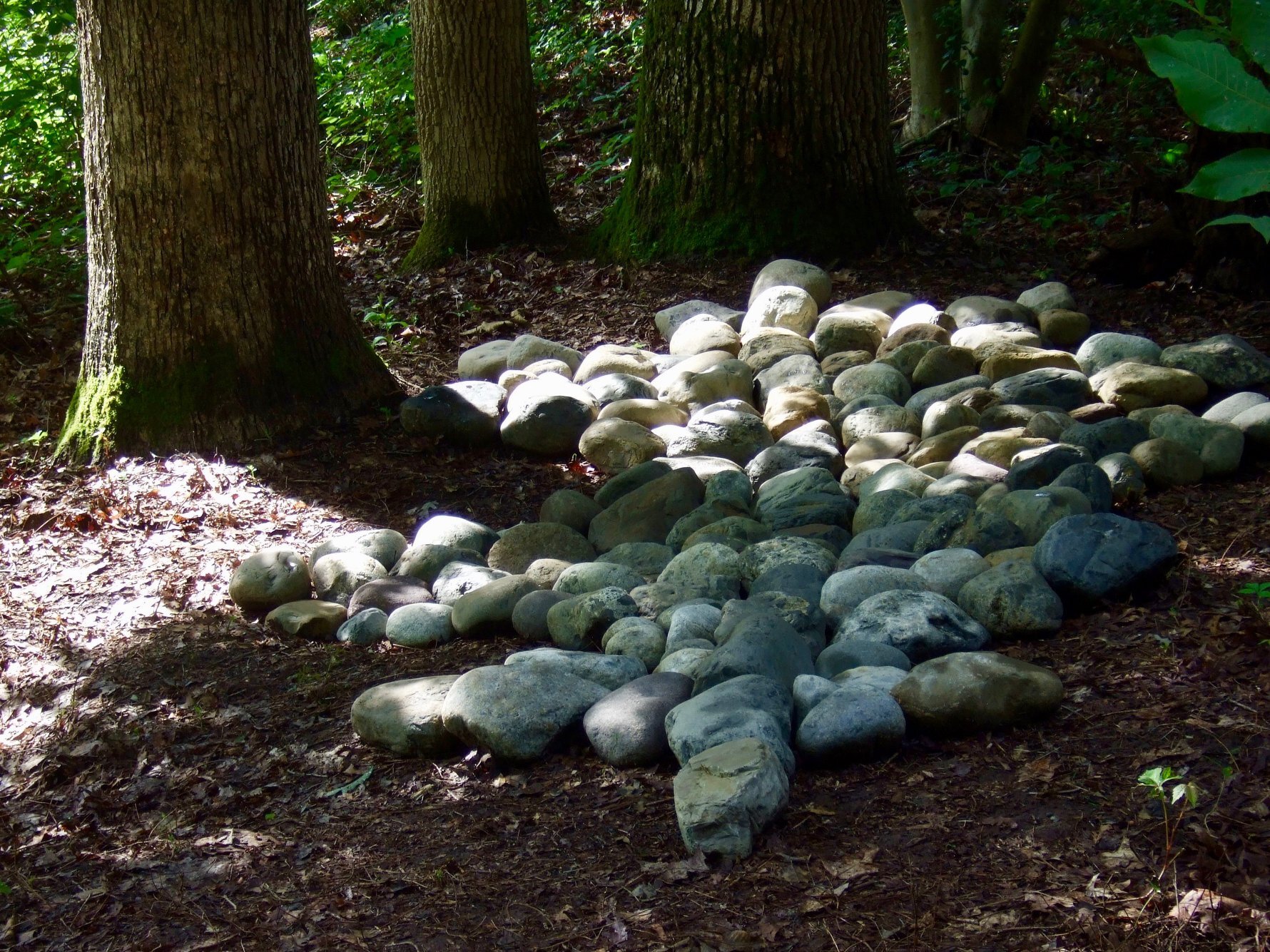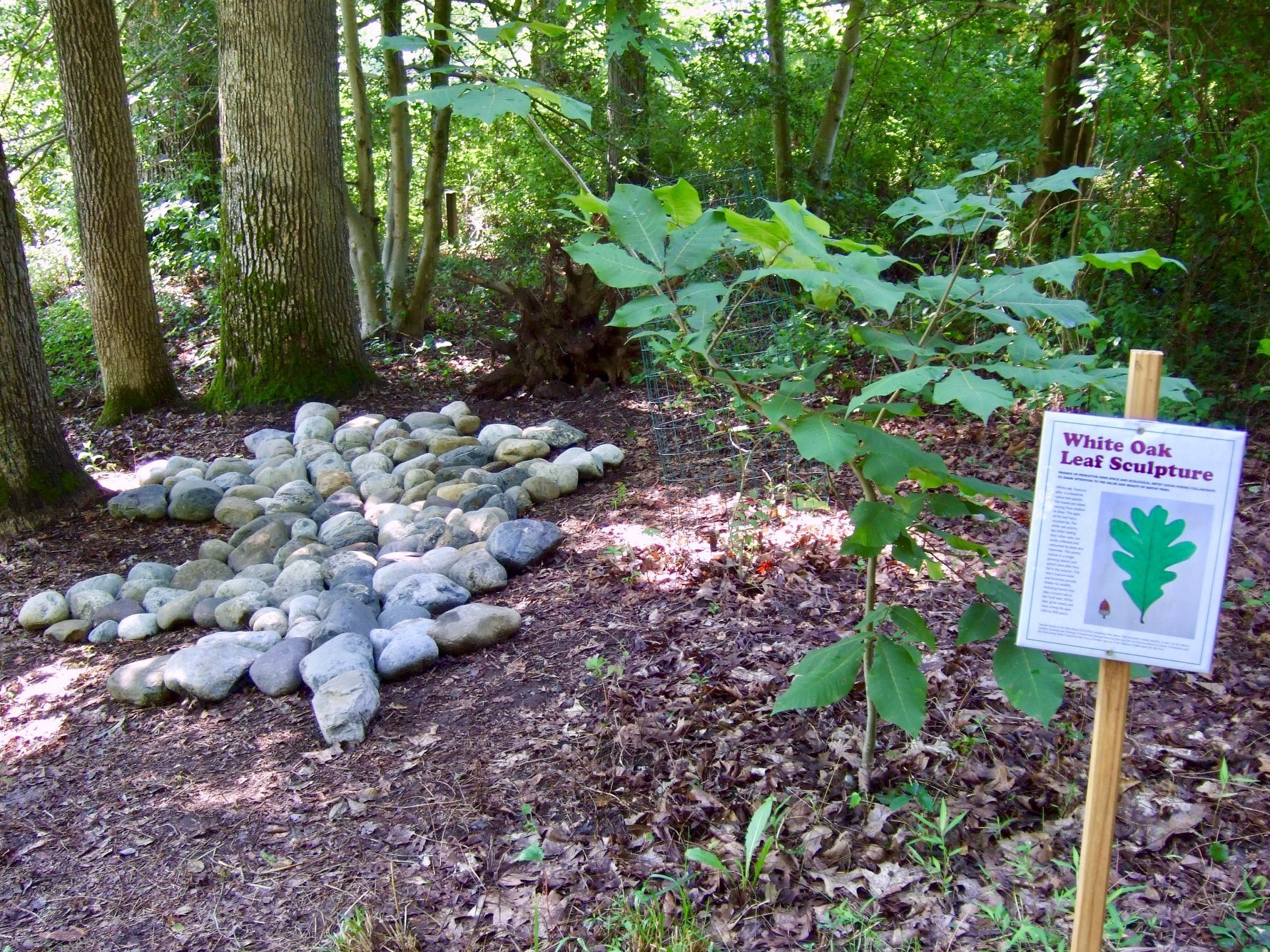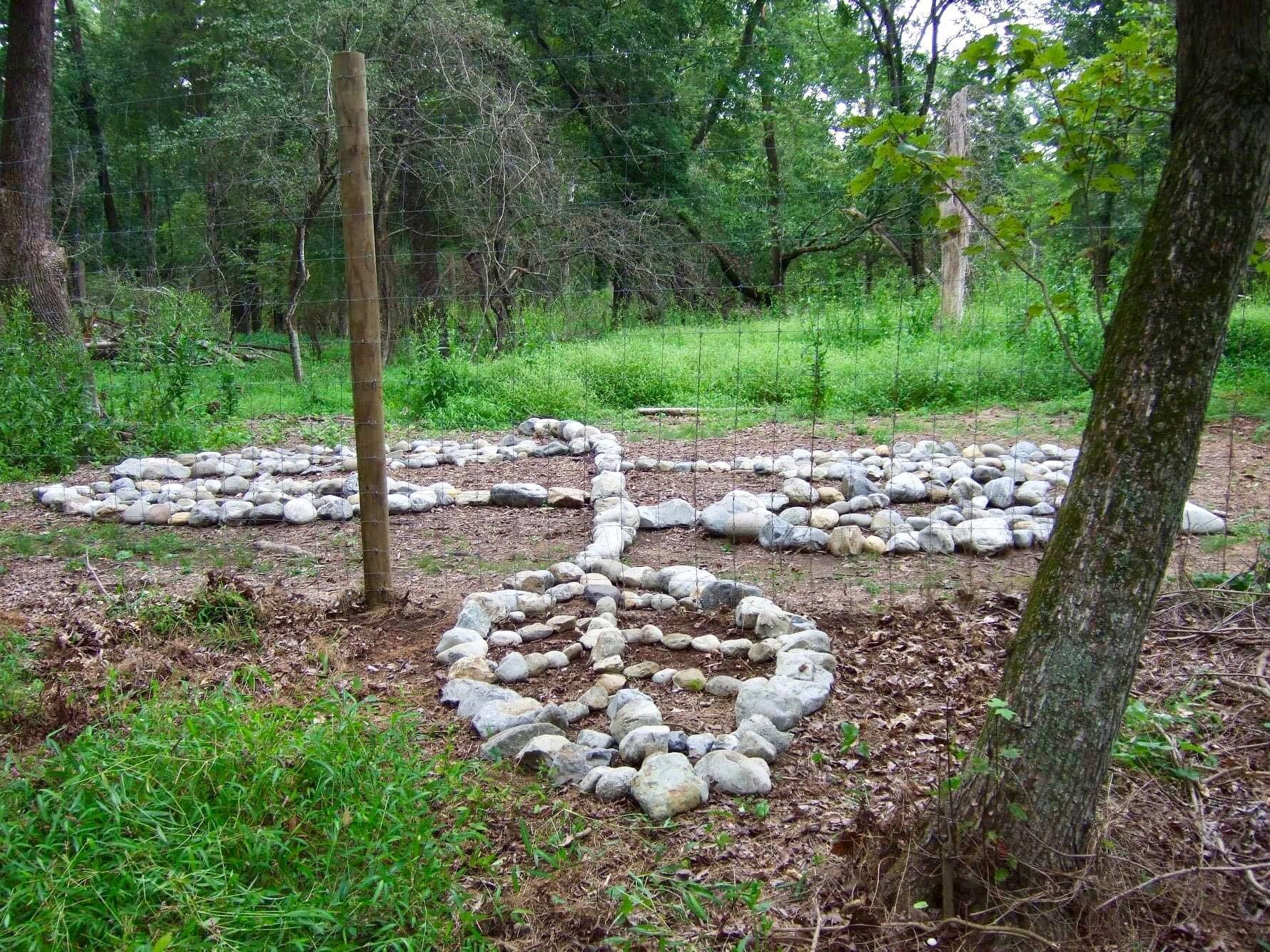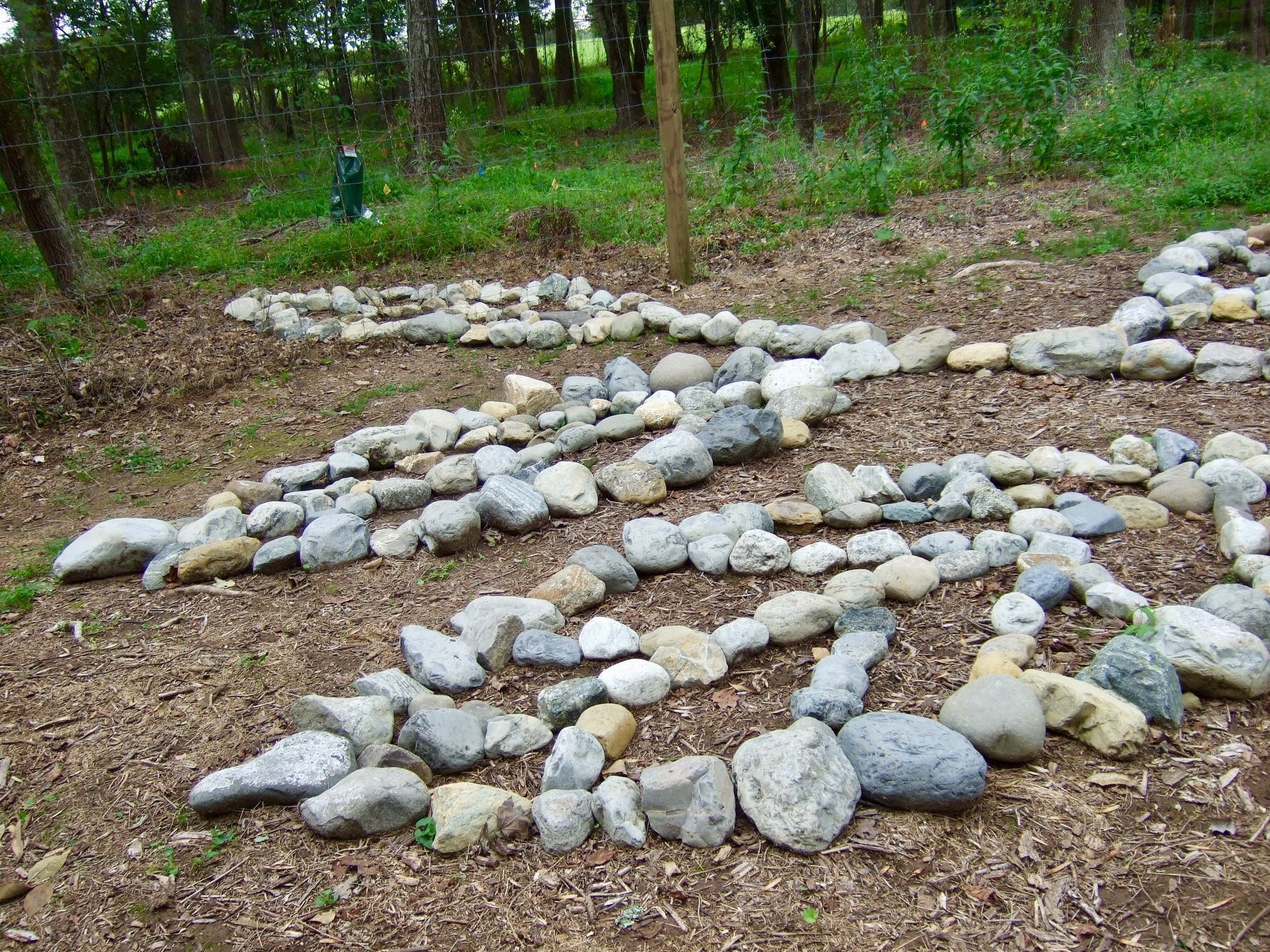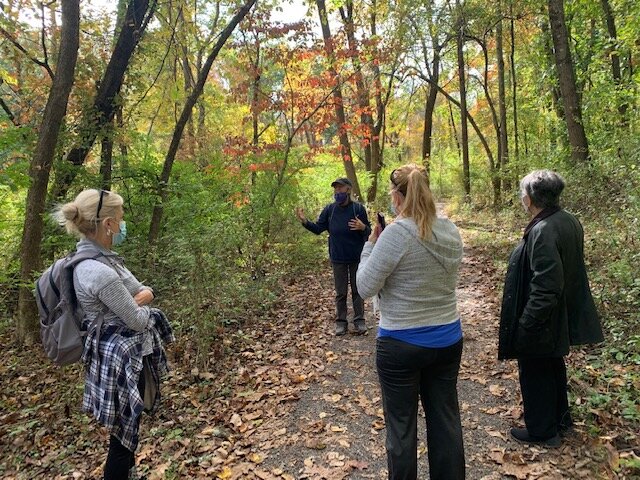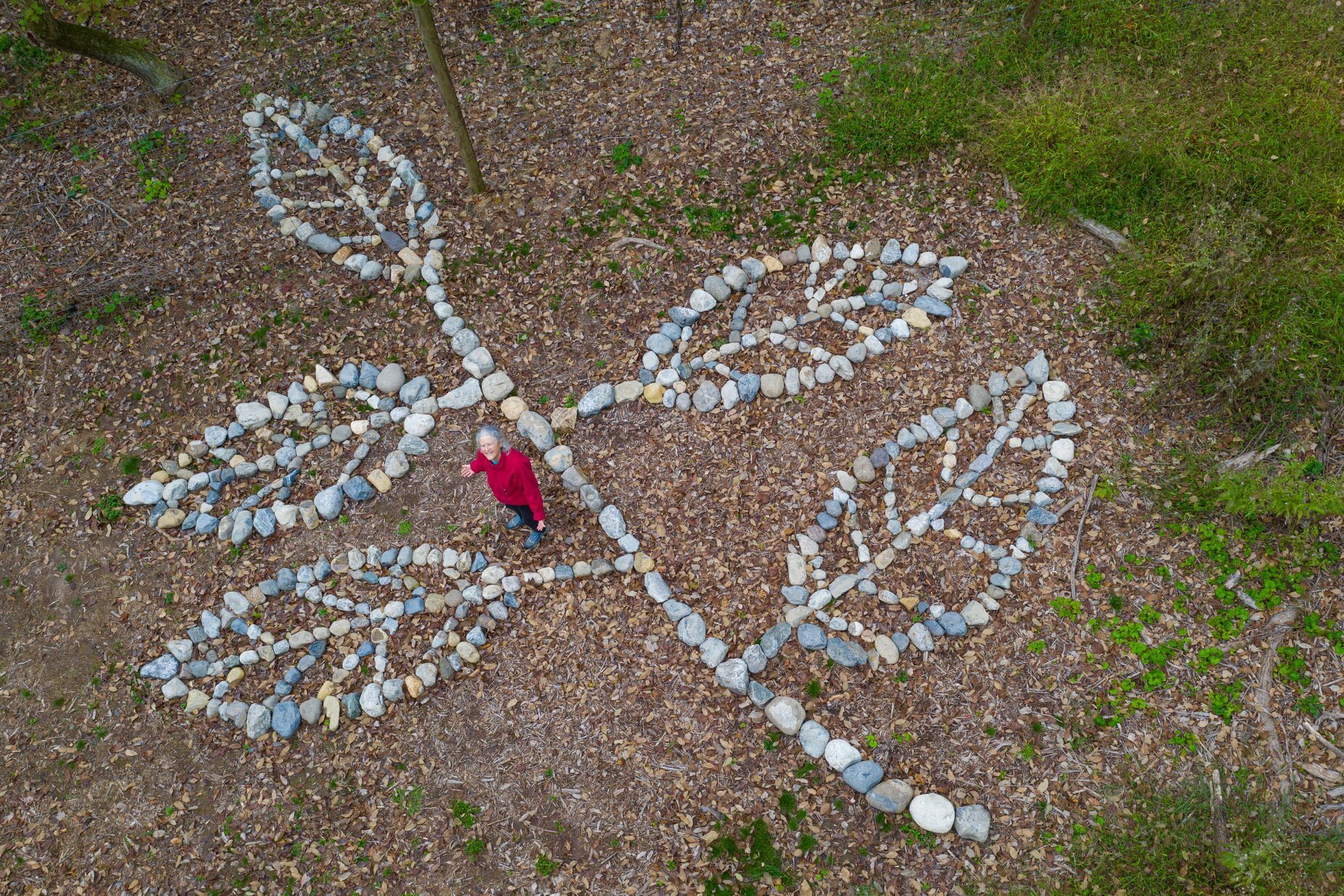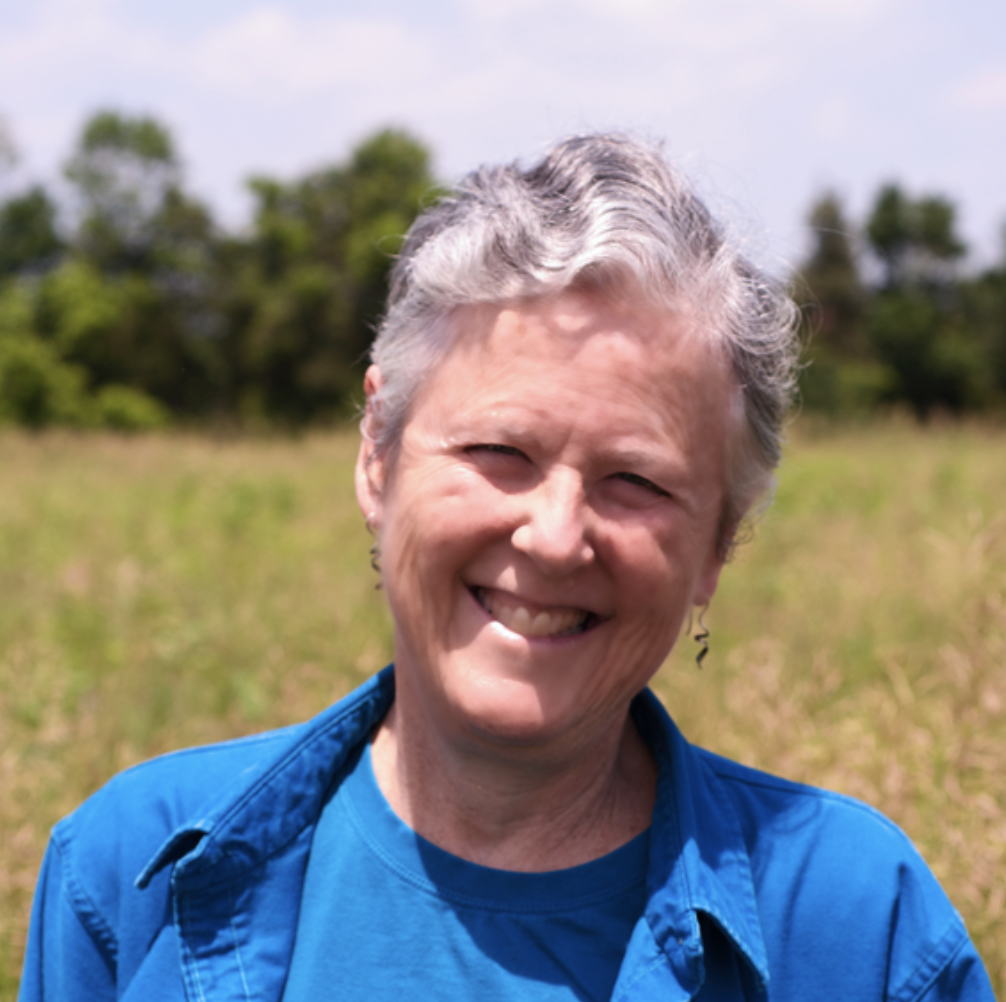If you’ve taken a walk north along the lakefront beyond the Mountain Lakes House, perhaps you’ve seen the art installation, White Oak + American Chestnut Leaf Sculptures, created by local ecological artist Susan Hoenig. Friends of Princeton Open Space and Susan Hoenig collaborated on this project to draw attention to the value and beauty of native trees, which not only please our eyes and soothe our spirits, but are critical to sustaining wildlife.
White oak, Quercus alba, is a keystone native tree species. It supports no less than 557 species of caterpillars, much-needed food for birds raising their young. The leaves are lobed, varying from shallow to deep. The apex of the leaf has a rounded tip. The white oak acorns, less bitter tasting than other oaks’, are avidly collected and consumed by wintering birds and mammals. The acorns mature in a single growing season and sprout soon after they fall in the autumn. The tree’s massive trunk and branches provide nesting sites and shelter for wildlife. White oaks grow slowly and have a long life span (350- 500 years). A massive white oak sequesters large amounts of carbon, helping counteract global warming. Small wonder that the oak is our national tree!
Restoration of the American Chestnut, Castanea dentata, to our eastern woodlands is a reminder that there is hope and renewal for the natural world. The American Chestnut is a simple and alternate-leafed deciduous tree. The leaves are oblong-lanceolate with coarsely serrated edges, one leaf blade per leaf stalk. Chestnuts develop in spiky burrs. In the autumn, they split open and mahogany-colored nuts fall to the forest floor. The American Chestnut is an essential component of the ecosystem, an important food source for a wide variety of wildlife.
Special thanks to the Belle Mead CO-OP for donating river stone for the sculpture. This program is made possible, in part, by the Mercer County Cultural and Heritage Commission through funding from the Mercer County Board of Chosen Freeholders and the New Jersey State Council on the Arts, a Partner Agency of the National Endowment for the Arts.
Artist Statement - Susan Hoenig
I connect Earth and Art to make visible the relationship between habitat, plant and animal life. My artwork explores ecological issues in our changing forests. In 2016, I created eleven “Ecological Leaf Sculptures” along a public trail in Graeber Woods Preserve, Franklin Township, New Jersey. Stones outline various species of leaves beneath the trees they are from. Throughout the seasons, I document the sites to observe the understory and impact of a warming climate. I lead Walking Tours for the public to see the leaf sculptures interwoven within the forest floor. I have exercises along the trail: “Notice the different shapes of the leaves. Find leaves that match the leaf sculpture at each site. Look up at the trees. Are they tall? Are there spaces around the crown? What can you hear? What season is it? What colors are the leaves?” I point out the deciduous trees that reach up to the canopy for sunlight, the forest floor covered with leaf litter where insects, plants and fungi live. We talk about the distinctive features of a forest ecosystem. In this way, people of all ages view nature in a new, engaging way.
My art practice also encompasses the study of avian life. I have worked at the Featherbed Lane Bird Banding Station in the Sourland Mountains of New Jersey since 2006. I am interested in the life cycle of birds and the conditions and habitat in which they live. In my “Songbird Paintings” I use geometrical forms of color to explore the phenomenology of roundness. At the essence is the expression of a poetic space. The “Birds & Berries” paintings are about the biological interaction of timing in nature. Birds and berries form a unique relationship, birds play a vital role pollinating plants and dispersing seeds.
In recent work, I address Human Ecology, the relationship between humans and their environment that sustains them. Why is one tree so important in the life of one individual? How do the changes in the understory of the forest affect the life of human beings? If the land could speak, what would it say? The Earth speaks to us and we must listen.
Here are a few images of Susan’s work in progress, including the final sculptures. For additional images, please visit our Facebook Album, White Leaf Sculpture by Susan Hoenig. View Susan’s artwork inspired by her sculpture installation here.
About Susan Hoenig
Susan Hoenig is a Princeton-based artist whose work in many media – including sculpture, painting and printmaking – consistently celebrates her lifelong love of nature and her avid interest in birds. Hoenig has taught both at The Newark Museum and at the Arts Council of Princeton for a number of years, where she works with low-income children in an afterschool program and with local seniors at the Elm Court, a Princeton Community Housing complex for older residents or those living with disability.
Since 2016, Hoenig’s recent works include “Ecological Leaf Sculptures”, where eleven leaves are outlined in stone, situated beneath the trees in Graeber Woods, Franklin Township, New Jersey. The stone leaves are alongside 96 acres of trails meandering through forest, meadow, stream and marsh. Hoenig leads Walking Tours to educate the public about the understory of the forest. Ecological Leaf Sculptures is an evolutionary study of the shifting changes happening before our eyes, and the inspiration for “White Oak Leaf Sculpture” in the Mountain Lakes Nature Preserve.



